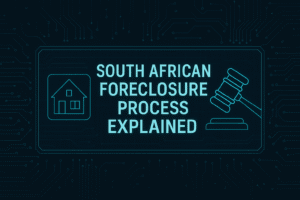How to Stop Mortgage Repossession: A Comprehensive Guide
Mortgage repossession can be a distressing experience for homeowners. The thought of losing your home is daunting, but there are steps you can take to prevent it. In this blog post, we will discuss the causes of mortgage repossession, the steps you can take to stop it, and how to protect your home in the long run.
Understanding Mortgage Repossession
Mortgage repossession occurs when a lender takes back a property because the borrower has failed to keep up with mortgage payments. This process is also known as foreclosure. Typically, mortgage repossession follows a series of missed payments, leading the lender to initiate legal proceedings to reclaim the property.
Common Causes of Mortgage Repossession
1. Job Loss or Reduced Income: Sudden unemployment or a significant decrease in income can make it difficult for homeowners to meet their mortgage obligations.
2. Unexpected Expenses: Medical emergencies, home repairs, or family emergencies can deplete savings and disrupt regular payment schedules.
3. Poor Financial Management: Inadequate budgeting or overspending can lead to financial strains that affect mortgage payments.
4. Interest Rate Increases: For those with adjustable-rate mortgages, sudden increases in interest rates can lead to higher monthly payments that borrowers may struggle to afford.
5. Divorce or Separation: Changes in family structure can lead to financial instability, affecting the ability to make mortgage payments.
Steps to Stop Mortgage Repossession
If you find yourself facing the risk of mortgage repossession, there are several proactive steps you can take:
1. Communicate with Your Lender
The first step is to communicate with your lender. Many homeowners avoid this step due to fear or embarrassment. However, lenders often prefer to work with borrowers rather than initiating foreclosure proceedings.
– Be Honest: Explain your situation honestly, whether it’s a temporary setback or a long-term issue.
– Request a Payment Plan: Ask if the lender can offer a temporary forbearance or a modified payment plan that suits your current financial situation.
2. Assess Your Financial Situation
Take a close look at your finances to determine how much you can afford to pay towards your mortgage. This includes:
- Creating a Budget: List all your income and expenses to identify areas where you can cut back.
- Prioritizing Bills: Make mortgage payments a priority over other expenses if possible.
3. Consider Refinancing or Loan Modification
If you’re struggling with high monthly payments, refinancing your mortgage or seeking a loan modification may provide relief.
– Refinancing: This involves obtaining a new loan to replace your existing mortgage, potentially at a lower interest rate.
– Loan Modification: This is a change made to the terms of your existing loan, which may include extending the repayment period or reducing the interest rate.
4. Explore Government Assistance Programs
Various government programs can help homeowners at risk of foreclosure. Some options include:
– Making Home Affordable Program (HAMP): A federal program designed to help homeowners avoid foreclosure through modifications.
– Home Affordable Refinance Program (HARP): This program assists homeowners whose property values have decreased, allowing them to refinance at a lower rate.
5. Seek Professional Help
Consider reaching out to a housing counselor or a financial advisor who specializes in foreclosure prevention. They can provide guidance tailored to your specific situation and help you navigate your options.
– National Housing Counseling Agency: This organization can connect you with certified counselors who can offer assistance.
6. Look into Selling Your Home
If you anticipate that your financial situation won’t improve and you’re unable to keep up with payments, selling your home may be a viable option.
– Short Sale: If your home’s value has dropped below the amount owed on the mortgage, you may be able to negotiate a short sale with your lender, where they accept less than the owed amount.
7. File for Bankruptcy (As a Last Resort)
Filing for bankruptcy can provide temporary relief from foreclosure, allowing you time to reorganize your finances. However, this should be considered a last resort due to the long-term impact on your credit score.
– Chapter 13 Bankruptcy: This allows you to keep your home while setting up a repayment plan for your debts over three to five years.
Long-Term Strategies to Prevent Future Mortgage Issues
Once you’ve navigated the immediate threat of repossession, it’s essential to establish long-term strategies to prevent future mortgage issues:
1. Maintain an Emergency Fund: Aim to save at least three to six months’ worth of living expenses to cushion against unexpected financial hardships.
2. Regularly Review Your Budget: Keep track of your financial situation and adjust your budget as necessary to stay on top of your mortgage payments.
3. Educate Yourself About Finances: Take the time to learn about personal finance, budgeting, and money management to enhance your financial literacy.
4. Stay in Touch with Your Lender: Maintain an open line of communication with your lender, especially if you foresee difficulties in making payments.
Conclusion
Facing mortgage repossession is undoubtedly a challenging situation, but it’s not insurmountable. By taking proactive steps and seeking assistance, you can work towards a solution that allows you to keep your home. Remember that early intervention is key, so don’t hesitate to reach out for help at the first signs of financial trouble. With careful planning and determination, you can navigate through this difficult time and secure a more stable financial future.



